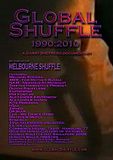Yup, we're talking Bhutanese pop music here. I know that sounds like I'm perilously close to the slippery slope that leads to ideological death by Throat-Singing Tibetan Monks, but actually it's really good stuff. If nothing else then more interesting, certainly, than what's across the border in China, or the himalayan regions of India, or in Nepal. Bloody commercial Nepal. :)

At a very basic level rigsar is a great study in the effects of cultural isolation and yawning awakening. Bhutan might be one of the most remote countries on earth, with strictly regulated foreign influence and few tourists, strange archaic systems of conduct and strong, nationalist integration policies. Throughout the seventies and eighties it practically lived and breathed "traditional values" and as late as the end of the nineties both television and the internet was banned. Lately, reforms have opened up the country immensely, with a 2005 constitutional change leading to the (apparently "shocking") gradual introduction of democracy. And so the music industry has flourished, with over 140 albums released in the last decade and dozens of recording studios. Good show for a country of half a million citizens!
Of course, there's another side of the picture too. Bhutan is surrounded on all sides by highly professional, powerful music industries (China, India, Nepal) and it was inevitable it was going to be influenced, whether it wanted to or not. (Usually not. Try to find a single source on Bhutan that doesn't mention "traditional Bhutanese values".) In fact, this is how rigsar got started - with a cover of Bollywood classic "Sayonara" in the sixties; rigsar inevitably implying an indian influence. (Much like indoprepi or chutney.) It took well into the eighties before it became a proper, broadly-avaliable style and into the nineties before there was a proper music industry, so in any case we're honestly talking about a country fumbling to find its place and sound among the neighbours. The VCD tracks I'm linking to here are all very recent, the technology didn't exist until a few years ago.
You'd think it would inevitably end up as a pale copy of something. Instead, it's endearingly simple - just listen to this great track:
It's just a rhythm track, a drone-like synth line, a very basic chord progression and the melody of some filmi track or other. The metaphor, at least sound-wise, seems to be "band" (like in Indonesian, Thai and Nepali music) rather than "orchestra" (like in India and China), and the value is very clearly pop-like rather than anything deeper. (Inevitably annoying a whole generation/class, like most other pop genres.) For a country whose traditional music is patently unmetered and lacking in percussion, the rhythms can be quite interesting and complex too - triple meter, weird syncopations, etc. etc.
You know what it reminds me a bit of? Sebastien Tellier. The very simplest music of the newly awakened mountain yokels who've never made pop before, equivalent to the most decadent, ironic continental avant-garde. The gods must be laughing somewhere.
Actually, by Bhutanese standards, rigsar is fairly avant-garde too (this article is a great, though prejudiced source). It's certainly breaking down a lot of previously forbidden barriers, promoting minority languages like sharchop and, in the end, bringing in foreigners. For now they're respectful ones, like the South Indian teacher who's hit it big with "Khu Khu Khu", but you have to wonder how long the marvellous isolation and naïveté of the mountain kingdom will last once the proper foreign co-operations set in. But maybe they're just quirky enough a people to push themselves ahead then, too.










































3 comments:
Is this what you mean by no outside influence?! ;) Your perfect genre?
It totally sounds like Sebastien Tellier, you're right.
Yeah, doesn't it? Unfortunately I think that might mean he's on the right track of what he's trying to achieve.
Post a Comment